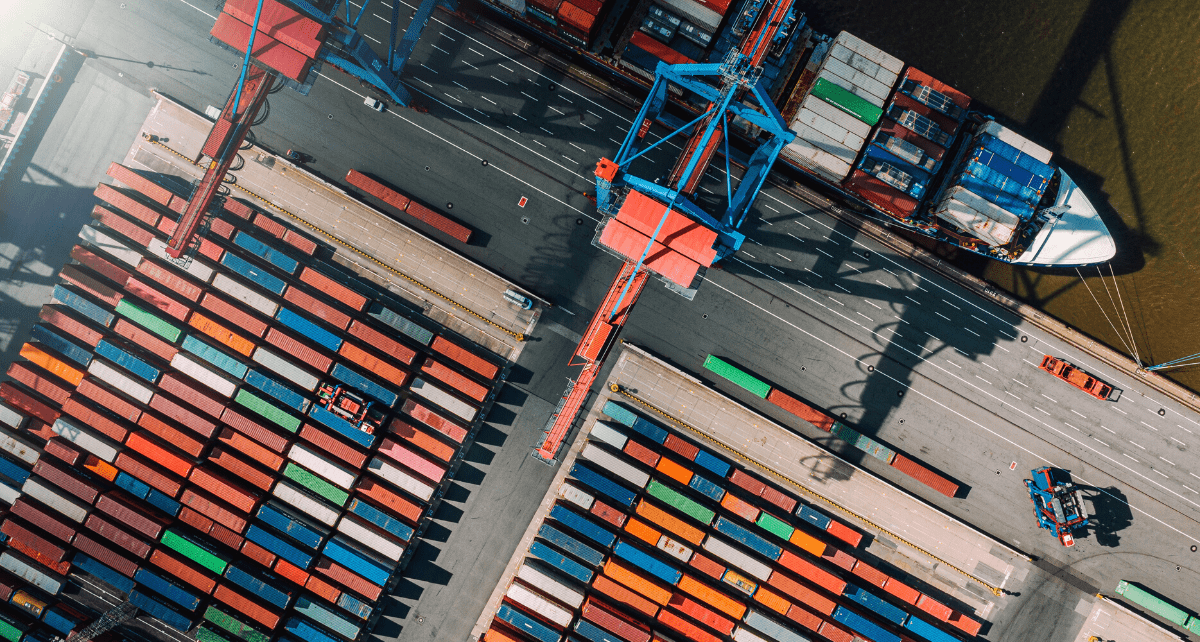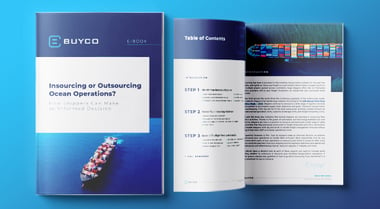Should You Outsource or Insource Container Shipping Operations?
Container shipping operations
Ocean operations are complex and involve multiple players spread across countries. While it may appear that relying on third-party logistics providers (3PLs) and freight forwarders is the only solution, you might be better off insourcing your container shipping operations. The question is, how do you choose? Here’s what you need to know:
STEP 1: Recognize your business objective to insource or outsource
The key to choosing between insourcing and outsourcing operations is to see which one fits your business goals better. While insourcing brings you closer to achieving some goals, outsourcing is beneficial to others.
Business Objectives Aided By Insourcing Container Shipping Operations
Cost Management
Insourcing involves an initial investment but the system will soon pay for itself. This not only makes operations faster, but negates the need for expanding your team and hence helps you do more within the same budget.
Control
Outsourcing operations gives you limited influence over the carriers and routes being chosen and the KPIs being considered for the choice.
However, with insourcing, you get complete control over every stage of the operations from choosing carriers with values that match yours to monitoring delivery performance.
Real-Time Visibility
Outsourcing limits the tracking data available to you and in turn hampers your ability to give customers realistic ETAs.
With insourcing, you can get live updates on when your shipment enters and leaves warehouses as well as its position while on the move. In the case of exceptions, early alerts help you make proactive decisions to minimize the delay and keep your customers informed to give them a positive experience.
Data Security
Managing shipping operations in-house reduces the risk of data breaches considerably. It cuts down on the amount of information you need to share with people outside your organization and allows you to implement enhanced security measures.
Business Objectives Aided By Outsourcing Container Shipping Operations
High Volume Shipping
When you’re dealing with large volumes and shipping to multiple destinations, outsourcing the ocean operations to established freight forwarders lets you leverage their expertise and experience to deliver better quality service.
Flexibility
If your shipping volumes change every month, the ROI on establishing in-house systems may not be profitable. It may make more sense to outsource the operations. This allows you to scale up or down as required and maintain flexibility.
STEP 2: Assess your resources to be able to insource your container shipping operations
Along with business objectives, you need to assess the resources available to you and whether they support building in-house solutions or outsourcing. The top 4 variables to be considered are:
Human Resources
You need qualified people to handle shipment planning, documentation, carrier communication, exception management, performance monitoring, etc.
Shipping Volumes
The higher your shipping volume, the easier it will be to bid and purchase carrier freight space at profitable rates.
Level Of Shipment Standardization
Automation works well when you’re dealing with uniform container shipments with defined container specifications, product types, production and warehouse locations, frequencies and volumes. Ideally, you should be sending out a minimum of 3000 containers annually to justify investing in automated systems. Else, freight management can be challenging and better handled by outsourcing models.
IT maturity
To fully experience the benefits of automation your IT resources should be able to handle new systems and your team must be tech-savvy. You will need to look into the possibility of using single ERP and TMS systems to streamline your operations or integrating cloud-based collaborative platforms like BuyCo with your existing system.
STEP 3: Invest in the right tools to insource your container shipping operations
As mentioned above, insourcing requires an initial investment. Here’s what you need to keep in mind while choosing tools to insource your operations.
Automation Levels
Look for tools like the BuyCo platform that allow you to automate maximum processes. This saves time, increases productivity and reduces the risk of error. With BuyCo, you can automate 80% of all shipping-related steps and thus free your employees to focus on other tasks.
End-To-End Processing
You must make sure that the system you set up can take care of all the different stages and processes of your shipping operations. With BuyCo, you can manage your end-to-end shipping process. It automates shipping planning based on cargo specifications, centralizes carrier searches, automates the booking process for selected routes, manages documents and provides extensive reports on carrier and operational performance.
Connectivity
Your system should allow you to see routes, rates, schedules etc. offered by multiple carriers on a single dashboard to save you from having to visit individual websites. Hence, you need to focus on connectivity. BuyCo is connected to 97% of all ocean carriers and hence makes it easy to find the right carrier and route for every shipment.
Search Filters
Given the varied KPIs that influence your booking decisions, you need to be able to filter search results. In some cases, costs may be the highest priority while in others, you may want to focus on CO2 emissions.
BuyCo presents information from all carriers with multiple filtering options. This includes routes, rates, allocation, ETA reliability, CO2 emissions, etc.
Ease Of Integration
To maintain efficiency and an easy flow of data, you need to ensure that the platform being introduced can be integrated with your existing systems. One of the reasons for BuyCo’s popularity is that it can be easily integrated with other ERP or TMS systems and it facilitates the secure exchange of data between systems.
Real-Time Visibility
Lastly, the tool you choose should make your container location accessible in real-time and provide timely alerts when exceptions arise. For example, BuyCo gives you real-time visibility over container movement on land as well as when it is en route over the oceans and alerts you to any possible exceptions so you can take proactive measures to stay in control.
In conclusion: How to insource your container shipping operations
Choosing between insourcing and outsourcing shipping operations depends on your goals, your operations, the resources available to you and more. Your choice should help you maintain control and efficiency.
Learn more about how shippers can make an informed decision about insourcing their container shipping operations in this ebook:




-min-1.png?width=352&name=BUYCO%20BLOG%20(3)-min-1.png)
%20(1).jpg?width=352&name=shutterstock_1465221008%20(1)%20(1).jpg)